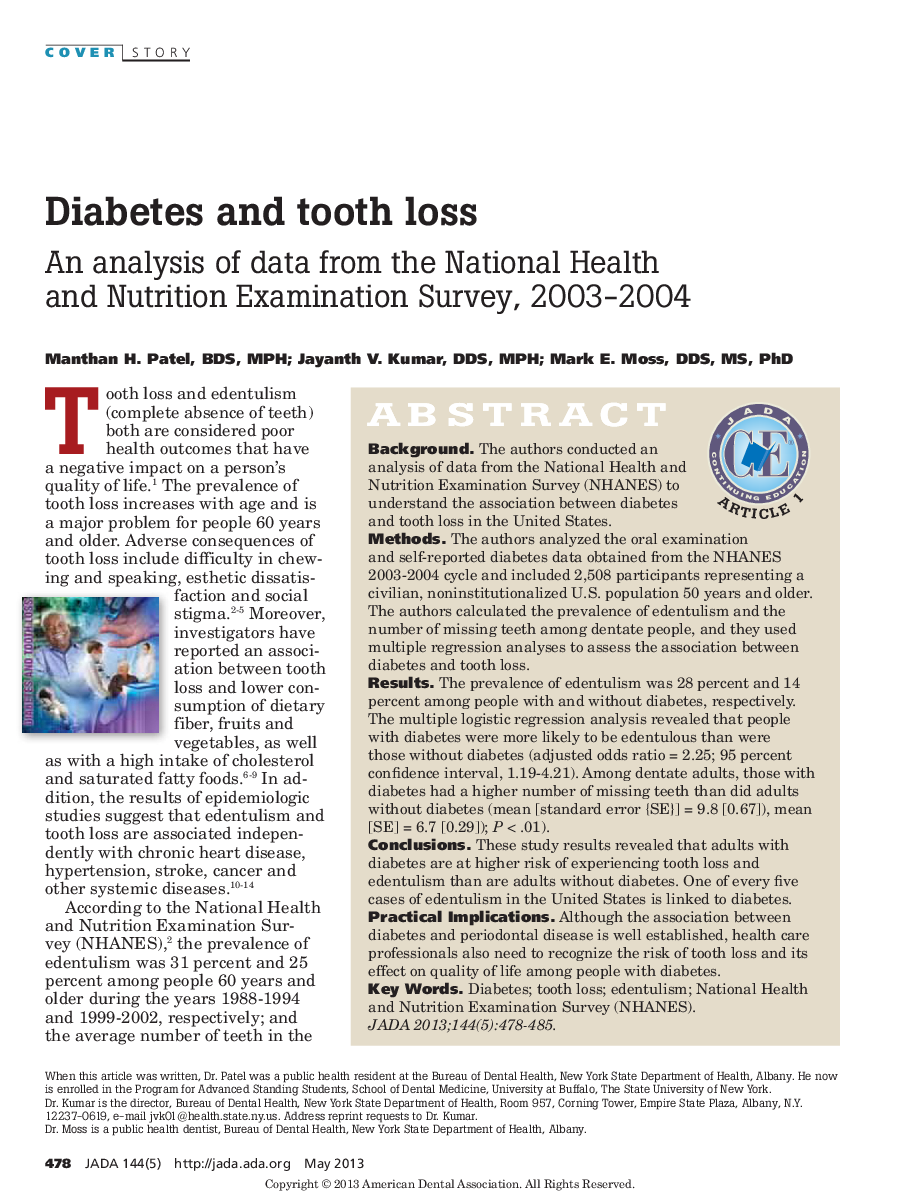| Article ID | Journal | Published Year | Pages | File Type |
|---|---|---|---|---|
| 3137609 | The Journal of the American Dental Association | 2013 | 8 Pages |
ABSTRACTBackgroundThe authors conducted an analysis of data from the National Health and Nutrition Examination Survey (NHANES) to understand the association between diabetes and tooth loss in the United States.MethodsThe authors analyzed the oral examination and self-reported diabetes data obtained from the NHANES 2003–2004 cycle and included 2,508 participants representing a civilian, noninstitutionalized U.S. population 50 years and older. The authors calculated the prevalence of edentulism and the number of missing teeth among dentate people, and they used multiple regression analyses to assess the association between diabetes and tooth loss.ResultsThe prevalence of edentulism was 28 percent and 14 percent among people with and without diabetes, respectively. The multiple logistic regression analysis revealed that people with diabetes were more likely to be edentulous than were those without diabetes (adjusted odds ratio = 2.25; 95 percent confidence interval, 1.19–4.21). Among dentate adults, those with diabetes had a higher number of missing teeth than did adults without diabetes (mean [standard error {SE}] = 9.8 [0.67]), mean [SE] = 6.7 [0.29]); P < .01).ConclusionsThese study results revealed that adults with diabetes are at higher risk of experiencing tooth loss and edentulism than are adults without diabetes. One of every five cases of edentulism in the United States is linked to diabetes.Practical ImplicationsAlthough the association between diabetes and periodontal disease is well established, health care professionals also need to recognize the risk of tooth loss and its effect on quality of life among people with diabetes.
